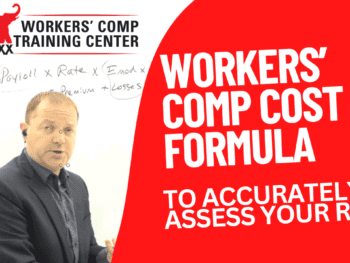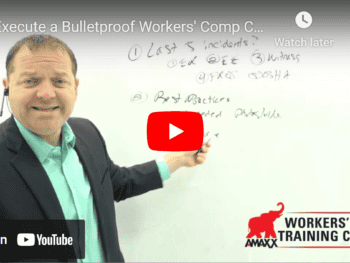Frequently instruction manuals give long lists of steps on “how to” implement a program, project or even hook up a DVD, utterly confusing and overwhelming. If you just looked at a list of all the elements required to implement a first class workers’ compensation program, you would also be overwhelmed.
However, it is necessary to be aware of the elements companies need to review when auditing/assessing their internal workers’ compensation management systems, so just glance over these and then we’ll move on: data analysis; safety; communication; training; return-to-work; medical care coordination; medical cost containment; investigation; file reviews; hiring; account instructions; claim handling standards.
1. Don’t “inventory” the components of your workers’ compensation program for effectiveness and integration. Analyze! For example, if your company sends loss cost data to operating units each month, be sure to summarize the data to draw attention to meaningful comparisons.
2. Identify those factors differentiating your company’s characteristics and problems from other companies by inquiring into your core systems covering documentation, attitudes, procedures, current practices, policies, and management systems.
3. Thoroughly review the level of understanding and awareness within company management and employee perceptions and attitudes, critical to an effective assessment.
4. Review internal control procedures by considering how consistently they are applied. Look for procedures implemented in a timely manner. For example, higher-than-normal indemnity costs may occur if there are delays in referring claims to the insurance company and delays in employees’ returning to work.
5. Consider the intangible issues of organizational structure, such as internal company reporting relationships and duties of personnel responsible for workers’ compensation. There are certain factors impacting the types of workers’ compensation cases and expenses your company may experience, such as basic company information, your industry, number and location of employees, makeup of the workforce and type of work.
6. Global Operations. Companies with operations abroad must analyze their workers’ comp program based on the rules of operations in their global community, plus United States laws applying to personnel working overseas.
Author Robert Elliott, executive vice president, Amaxx Risks Solutions, Inc. has worked successfully for 20 years with many industries to reduce Workers' Compensation costs, including airlines, health care, manufacturing, printing/publishing, pharmaceuticals, retail, hospitality and manufacturing. He can be contacted at: Robert_Elliott@ReduceYourWorkersComp.com or 860-553-6604.
Podcast/Webcast: How To Prevent Fraudulent Workers' Compensation Claims Click Here http://www.workerscompkit.com/gallagher/podcast/Fraudulent_Workers_Compensation_Claims/index.php
TD Calculator: www.reduceyourworkerscomp.com/transitional-duty-cost-calculator.php
WC Calculator: http://www.reduceyourworkerscomp.com/calculator.php
Do not use this information without independent verification. All state laws vary. You should consult with your insurance broker or agent about workers' comp issues.
















